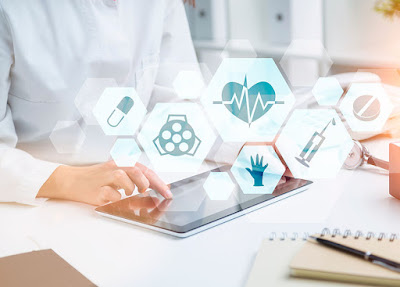Tuesday, March 19, 2019
Biometrics in healthcare: improving accuracy, safety and privacy
The shift from paper-based records to electronic health records (EHR) has allowed for more accurate and up-to-date information, highly coordinated and efficient care, secure sharing of patient data and fewer medical errors.
These benefits rely on accurate verification of patient identity. To meet this challenge, some healthcare institutions are moving away from biographic identifiers (such as name, date-of-birth, SSN) to biometric identifiers (including fingerprint, face, iris and voice).
Medical information can be stolen, lost, forged, mistyped and duplicated. A biometric identifier, unique to one person, helps make medical record keeping cleaner, with fewer duplicates, and less risk of treating the wrong patient.
If a patient is registered, biometric identification is especially useful if a patient cannot assert their own identity. Biometric ID verification also helps prevent attempts at identity misrepresentation to receive healthcare without payment.
For patients at home, accessing healthcare records online may be easier with biometric ID. Passwords can be hard to remember, especially when infrequently used. Biometric ID can also be part of a multi-factor verification system. For example, if a patient has trouble logging in online, a message can be sent to a smartphone that prompts a biometric verification.
Biometric verification can also be used for patients picking up prescriptions at a pharmacy. In the future, biometric verification can provide a secure and convenient login to telemedicine portals.
In a Pew Charitable Trust Survey, most patients responded in favor of biometrics for identity verification citing: decreased medical errors, a more complete picture of one's health for clinicians, and better security than using demographic data as an identifier. Clinician respondents also favored biometrics; many already use it for access control for their staff.
The main reservation to the widespread adoptance of biometric ID in healthcare relates to standardization, and acceptance by governing bodies to encourage their use.
Biometrics in healthcare: Improved safety and privacy for patients
Published 2019 by Aware, Inc., Aware.com
Accurate Biometrics
Managed Fingerprinting and Identity Solutions
Tuesday, March 5, 2019
A “fingerprint” to detect counterfeit goods with your smart phone
 |
|
Credit: Thomas Just Sørensen
|
Consumers of a wide array of goods — from luxury watches, designer handbags and athletic shoes to medications, bottles of wine and tins of biscuits — have not been able to easily check the authenticity of an item they purchased. They have to trust every step of the manufacturing and supply chain.
Researchers at the University of Copenhagen have developed a system to use a smart phone and phone app to check whether a product is genuine or fake. The system involves printing a QR-code on a label, or tag, and then spraying the code with a transparent ink that contains readable micro particles. After nearly 10,000 tests with no false positives, the researchers are confident they have created “the world’s safest” anti-counterfeiting system.
The tags, or chemical "fingerprints", are inexpensive to produce, and as unique as fingerprints. The tags can be as small as the size of a comma. Before leaving the factory, a product is tagged, and the tag’s fingerprint is then registered in a database. The UPC code and tag can then be checked back to the database by a smart phone and app.
The University of Copenhagen has patented the system. Currently only the final software component is incomplete. The researchers expect to have that completed this year. Their research has been published in the journal ACS Applied Materials & Interfaces.
New weapon to combat counterfeit goods: use your smartphone to check for fake merchandise
Published February 21, 2019, on ScienceDaily; source, the University of Copenhagen.
Accurate Biometrics
Managed Fingerprinting and Identity Solutions
Subscribe to:
Comments (Atom)
